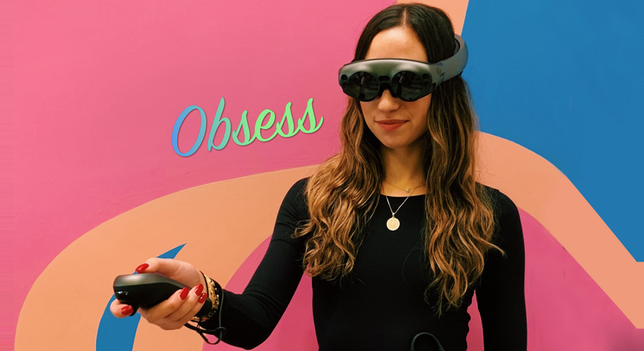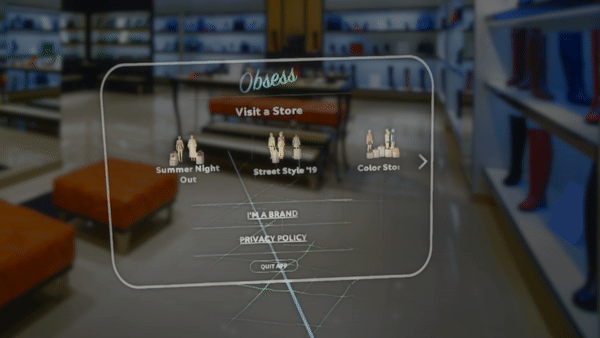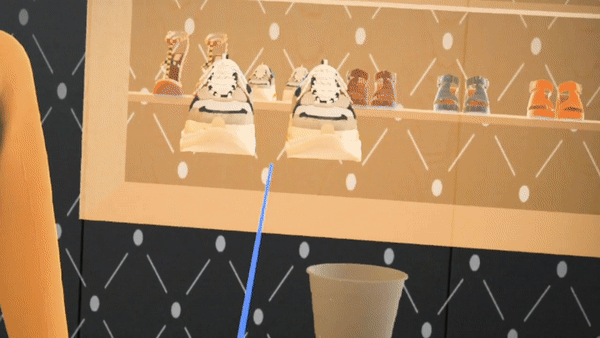
January 13, 2020 – Magic Leap has today announced that another of its Independent Creator Program finalists, Obsess, has recently published its spatial computing solution for merchandising. Obsess brings the merchandising process into the digital age and allows retailers to set up fully virtual stores for shoppers as well as easily iterate on potential store layouts. Shoppers will be able to “download” stores from Magic Leap World and shop retail in their homes. Retailers will be able to “download” various retail store layouts complete with mannequins, clothing and accessories.
Obsess CEO, Neha Singh, discussed the company’s origins and capabilities with Magic Leap in a blog post. Singh stated that Obsess came about due to a frustration with the online shopping experience from a consumer perspective, and stated: “Today’s information based e-commerce interface – essentially a database on a webpage – is great for directed shopping – when you are looking for something specific. It’s not suited for hedonic shopping – when you are browsing for inspiration and the enjoyment of the shopping process itself, which actually leads to higher spend than directed shopping. Currently, that behavior primarily happens offline and is not captured in e-commerce. Obsess is creating a new interface for online shopping, focused on discovery and memorable experiences.”

Obsess can be used for shopping at home, allowing shoppers to discover brands and products through immersive experiences, instead of scrolling through a grid of items on a webpage. However, Obsess also has applications for retail stores too – wherein Magic Leap devices can be used to extend the real estate of the store, effectively to infinite degree. For example, with Obsess, empty shops can house multiple brands all visible virtually through a Magic Leap headset. Retailers with existing stores can also use it to show inventory they are not carrying at the store. This increased efficiency with physical real estate will help one of the biggest problems facing the retail industry today, according to Singh. Another application of Obsess is that it allows retailers to simulate and test in-store visual merchandising set-ups virtually, without having to go through the expense of physical buildout.

Singh commented further: “For retail stores, spatial computing fundamentally changes the requirements of real estate. It will enable retailers to get more efficient without the need for a large physical footprint. It will give consumers the ability to experience products in a store without them having to physically exist there – endless virtual aisle. Different departments can exist in the same physical space. Even different brand stores can exist in the same physical space. In-store merchandising will be able to be dynamically updated and personalized.”
Ultimately, Obsess makes for a more intuitive and natural shopping experience for shoppers, as they are able to see products in 3D. Furthermore, for web-page based shopping experiences, products appear the same size, but with spatial computing shopping experiences such as Obsess, shoppers can visualize products in their true size relative to each other.
According to the Shopify 2019 E-commerce Report, experiential e-commerce is expected to be one of the 4 main factors that will drive the growth of fashion e-commerce (and the shift from offline to online) over the next four years. According to Singh, spatial computing will be an every-day part of physical and online shopping in the coming years, and shopping experiences can improve drastically with spatial computing. All the applications are there, the industry is now waiting for the hardware to catch up.
Image and video credit: Obsess/Magic Leap
About the author
Sam Sprigg
Sam is the Founder and Managing Editor of Auganix. With a background in research and report writing, he has been covering XR industry news for the past seven years.




